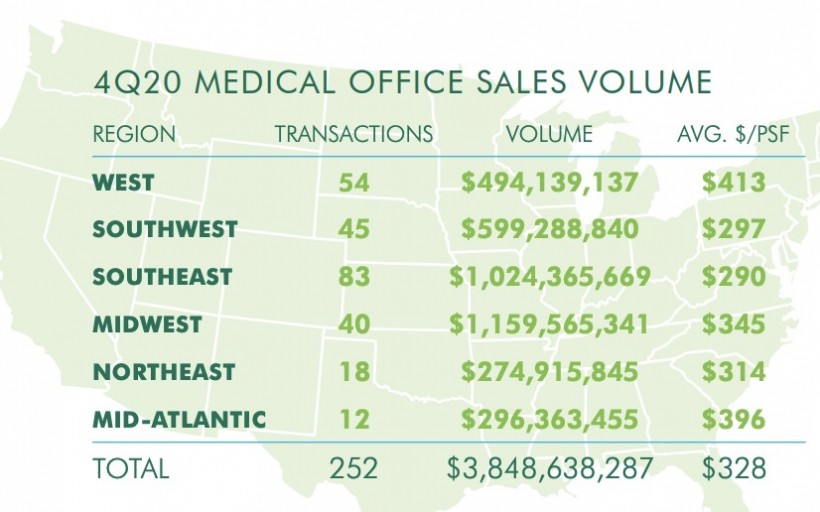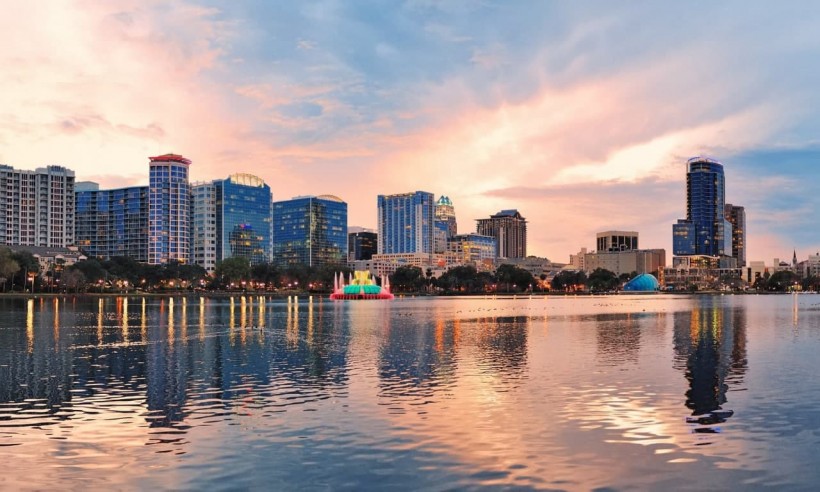America has been seeing significant shifts in its population. Thanks in part to the availability and acceptability of remote work, a desire for a warmer climate, more space, and other factors such as job growth, affordability, healthcare costs, lower taxes, life expectancy, and more, we have been seeing seismic migration trends throughout the country.
The pandemic only exacerbated these trends from a policy standpoint, with many people looking to escape denser locations with stricter lockdown measures for sunnier locales with a more flexible approach to managing the Covid crisis.
The impact can be felt across wide swaths of the American economy, particularly in the healthcare sector. "As the pandemic ravaged the global economy and roiled international real estate markets, the need for high-quality healthcare became apparent and the healthcare sector was able to withstand the downturn, and emerge in many ways stronger and more stable than ever before," explains Martin Freeman, CEO of OrbVest, a global real estate company that invests in US income producing medical commercial real estate, "in states that have experienced significant in-migration over the past few years, particularly the West outside of California, the Southwest and Southeast, demand for convenient, affordable, superior medical care has become an additional catalyst for population growth."
OrbVest recently closed on its first property in Florida, a 76,771-square-foot medical office building in Jacksonville, Florida. This is OrbVest's fourth acquisition since the start of 2021, including a medical office property in fast-growing Phoenix, Arizona and a property in Fayetteville, Georgia, located just south of downtown Atlanta.
How Are These Trends Shaking up the Healthcare Industry?
Prime locations are more likely to attract higher quality healthcare providers. Medical professionals also want to make money, so healthcare providers look for offices in places with the most exposure. Of course, if a healthcare center has top-quality healthcare providers, it's more likely to be a lucrative investment.
Pockets of the West Coast and the broader Sunbelt, South, and Mountain regions have experienced the most in-migration. As a result, it's not surprising to see that these regions saw the highest volume of medical office sales in Q4 2020. Together, the West and Southwest saw almost 100 medical office transactions. On the other hand, the Southeast alone saw 83. Meanwhile, look at how significantly the Northeast and Mid-Atlantic lagged behind.

However, a better depiction of how migration trends have impacted the healthcare industry is medical office building construction. Look at the number of new developments sprouting up in the Midwest, Southwest, and Southeast vs. the rest of the country. The Midwest does have some states experiencing significant out-migration, but the booming Mountain region is also included here.

Migration trends have drastically impacted the healthcare industry and regions that have seen the most sales volume and development. According to Welltower, much of this can be because 80% of an individual's health and wellness are influenced by social determinants by where you live and age.

Suppose you take these factors into consideration and dive a little deeper into these healthcare real estate trends. There appears to be a direct correlation between healthcare real estate, demographics, and migration.
According to CXRE, Sunbelt states have witnessed smart investments into medical office buildings due to mild year-round climates and its appeal to both aging boomers and young families. Frequently, these age cohorts are seeking better weather and an active lifestyle.
You have to consider the cost of living and the cost of healthcare as well.
For the younger cohort, notice how much more affordable it is to have a family with two children in the Sunbelt and the South compared to major metropolises like New York City and San Francisco.
Specifically, look at the cost of healthcare.

For our aging population, consider their desperate needs for affordable and convenient healthcare.
According to WellTower, our 80+ demographic is growing exponentially and is outspending every other age cohort on healthcare combined.

A study was done by West Health and Gallup and revealed that in the past 12 months, seniors have withdrawn an estimated $22 billion from their long-term savings for healthcare expenses.
Plus, the Washington Post claims the following:
● 10 percent of Americans 65 and older did not seek needed treatment in the past 12 months because of care costs.
● About 7 million seniors couldn't afford to pay for their prescribed medication in the past 12 months.
● Eighty percent of the prescriptions seniors can't afford are used to treat somewhat serious or severe health conditions.
● Ninety-two percent of seniors believe the cost of health care will not improve or will get worse.
Convenience is a significant factor for this aging cohort too. Decreasing birth rates and migration are causing more healthcare properties to sprout up in more convenient locations within population centers. The 65-and-older segment has increased from 12.8 percent of the population to 16.1 percent. By 2030, it could make up more than 1/5. This has a direct impact on healthcare. According to data from the 2010 Census, more than two-thirds of people in this age group (66.5 percent) see the doctor three or more times a year, up from less than half of those aged 46-64 (44.2 percent).
Take locales such as Florida as a specific example for the demographic shifts causing the rise of segmented and specialized healthcare facilities. South Florida is home to the highest concentration of older residents in the country, with more than 3.3 million Floridians aged 65 and older, and 1 in 20 now 80 years old or older.
Because this is a growing cohort, convenience and lifestyle integration are driving heavier demand for healthcare facilities. This has given rise to the increasing trend of MedTail real estate, for instance, or lower-acuity, lower-cost healthcare facilities integrated with retail locations.
Notice this map from a RAND Corporation Research Brief depicting MedTail real estate. According to the map, about ¾ of retail clinics are located in the South and Midwest, with Florida noticeably dark-shaded.

Key Takeaways
Analyzing demographic trends is vital for any real estate investment. However, for healthcare, that is especially the case. Often for real estate investments, demographics are overlooked in favor of location. However, for healthcare, demographic shifts and their impact on migration go hand in hand with location and its correlation to healthcare real estate trends.
America is evolving demographically. Our population is not only aging but taking into account lifestyle quality more than ever before. Young families want more lives that are more affordable and higher-quality. Our senior cohort is a growing segment of our population and enjoys a better climate with affordable and convenient healthcare integrating with their lifestyles. Many of these migration trends have been occurring long before the pandemic. However, the pandemic only accelerated these trends.
For savvy real estate investors, understanding what people desire and why and where they are moving is very important. If you're looking into investing in healthcare real estate, consider how demographic changes, migration, and how people's desires in specific locations directly correlate with healthcare properties. Suppose you can put your finger on this pulse and look not 5 years down the road but 10+. In that case, you can unlock a historically strong opportunity.
"At OrbVest, we believe that healthcare-related commercial real estate in the United States has been able to prove its resilience before and during the pandemic, and should continue its growth as an aging population, technological progress and incontrovertible demographic trends continue," says Freeman.
* This is a contributed article and this content does not necessarily represent the views of sciencetimes.com




![Sat-Nav in Space: Best Route Between Two Worlds Calculated Using 'Knot Theory' [Study]](https://1721181113.rsc.cdn77.org/data/thumbs/full/53194/89/56/50/40/sat-nav-in-space-best-route-between-two-worlds-calculated-using-knot-theory-study.png)










